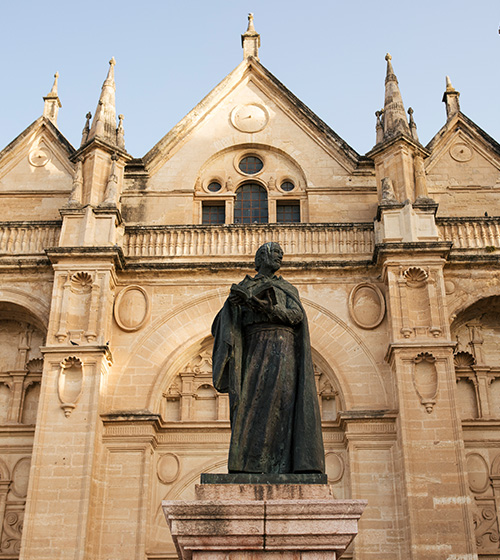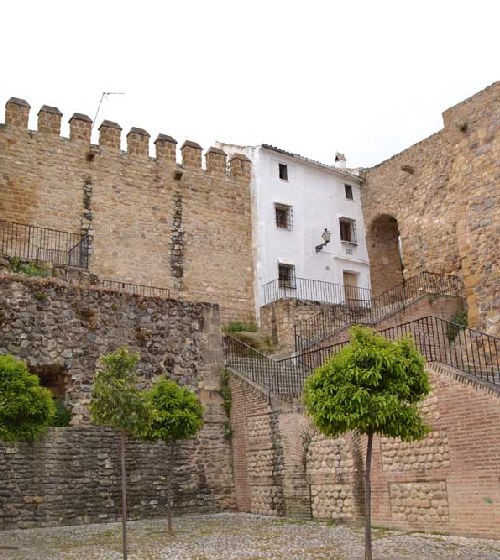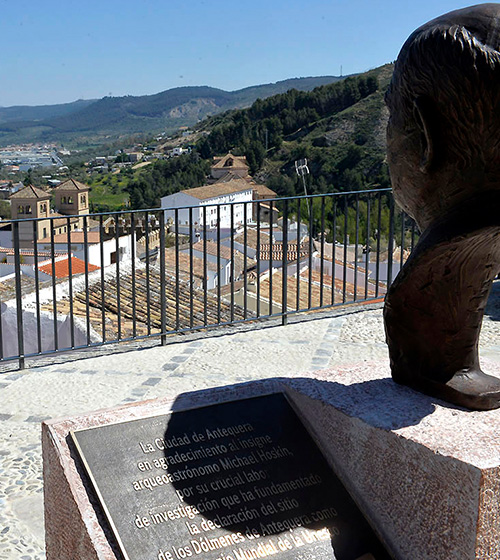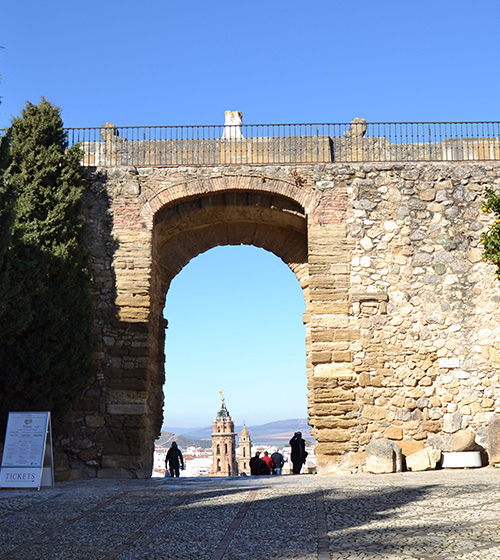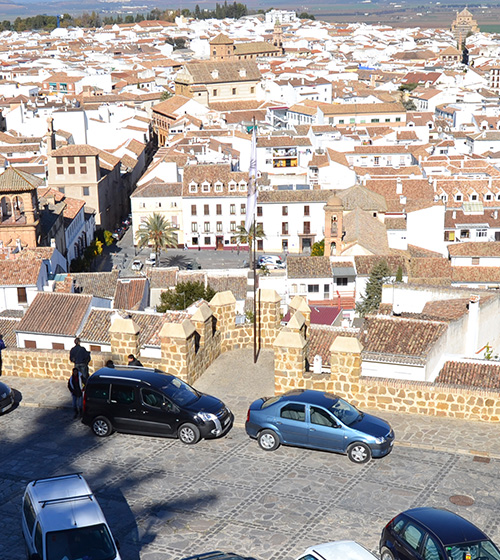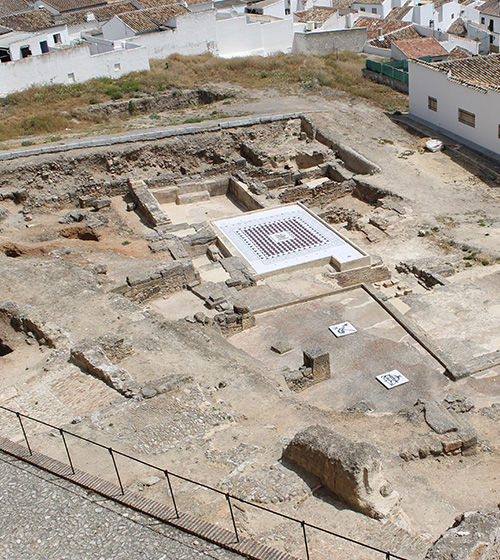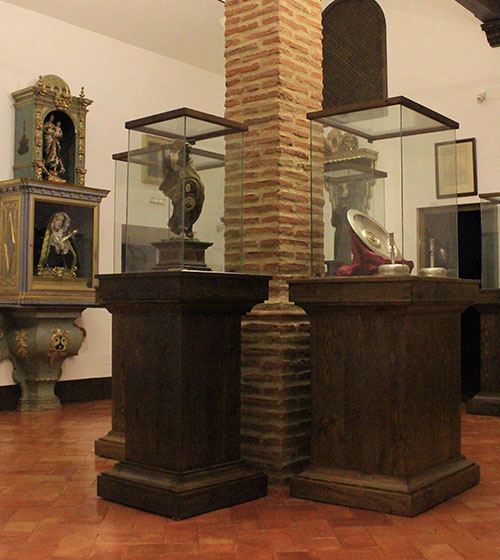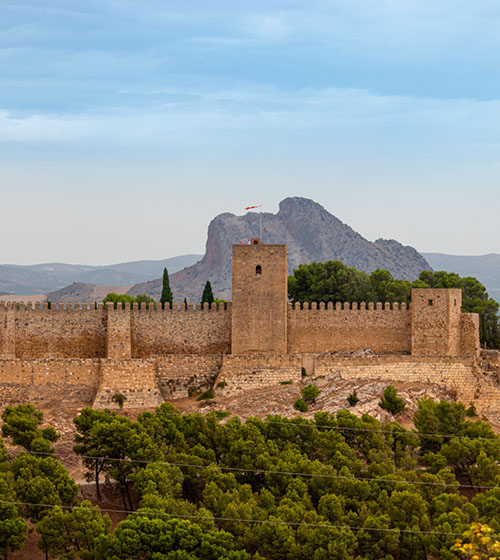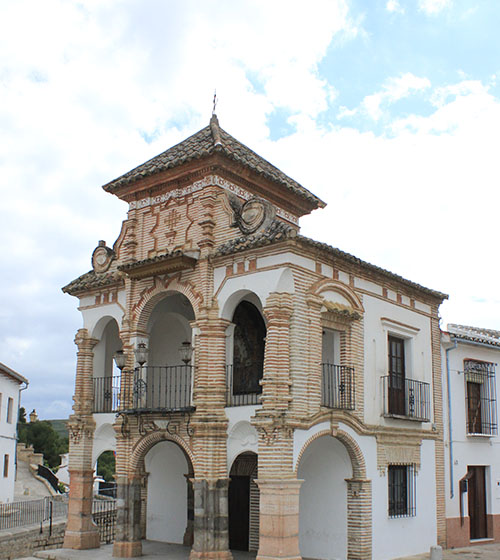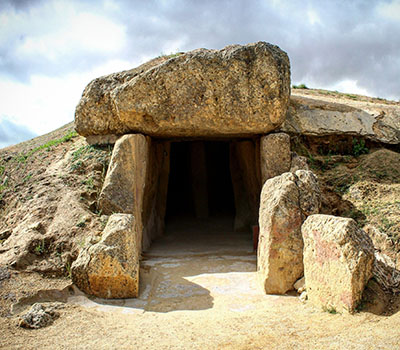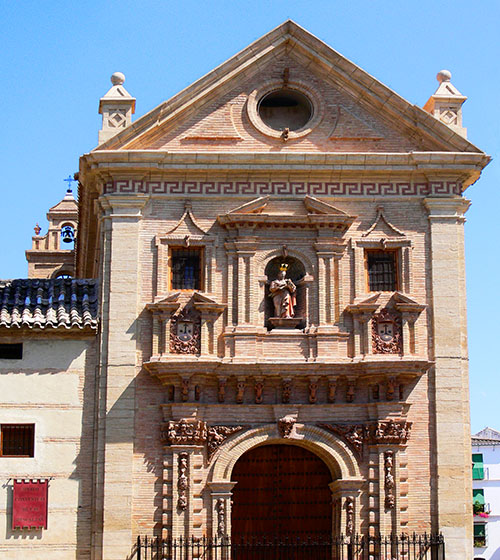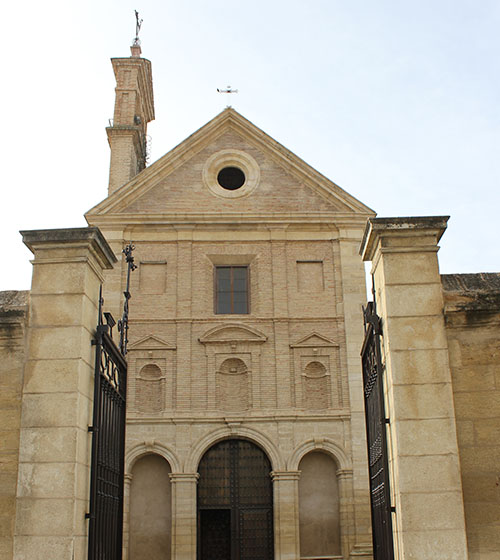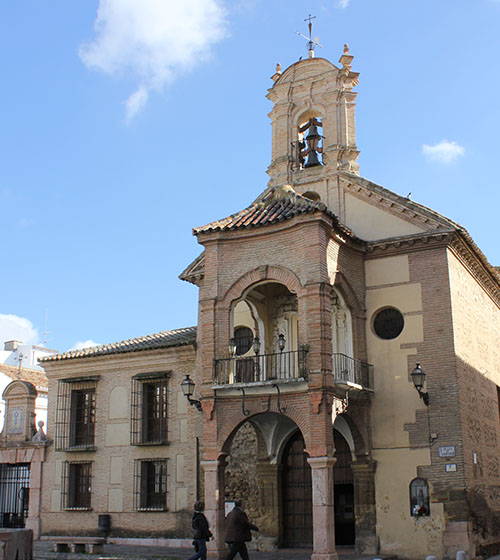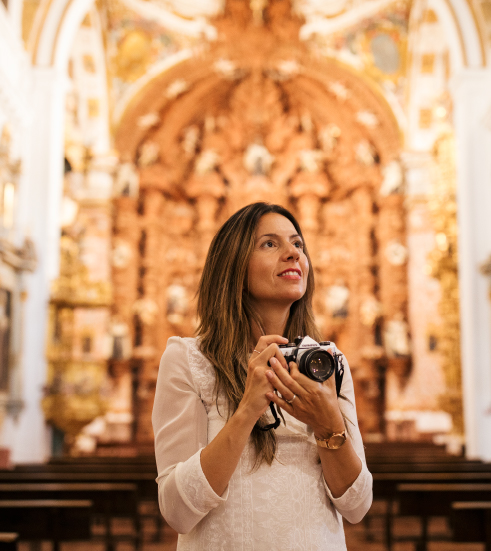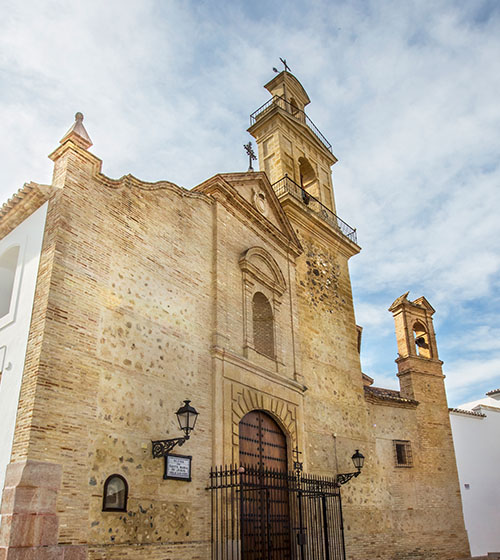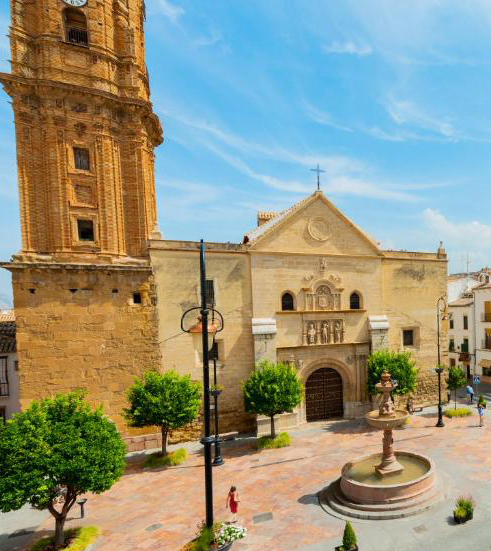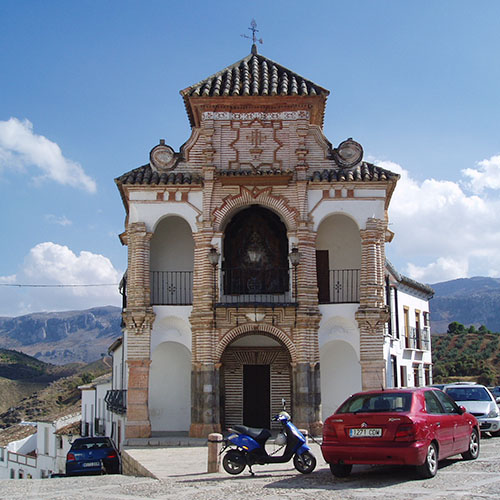Real Colegiata de Santa María la Mayor
The importance of this building lies in being the first to be conceived within the Renaissance style in Andalusia. It is truly an exceptional work for its proportions and quality of its design. In it, two different style criteria coexist; on the one hand we find elements that remind us of the late Gothic and on the other its traces and various decorative elements already correspond to the new style that emerged in Italy.
Plaza de Santa María s/n Antequera, Málaga
Real Colegiata de Santa María la Mayor
Postigo de la Estrella
Important remains of the old Muslim fence of the town are preserved, next to the Plaza del Carmen, these are the tower of the Assault and the albarrana tower of the Star. The Albarrana de la Estrella tower is an autonomous tower attached to the fence by a semicircular arch, next to which a gap or shutter was opened after the conquest, in order to enter the enclosure. The Andalusian Arabic flavor of this corner is evocative of other times.
Plaza del Carmen, Antequera, Málaga
Postigo de la Estrella
Michael Hoskin Lookout
Viewpoint oriented to the Peña de los Enamorados, located next to the Arch of the Giants, and dedicated to the British archaeoastronomer Michael Hoskin.
Plaza de los Escribanos,1, Antequera, Málaga
Michael Hoskin Lookout
Arch of the Giants
The Arch of the Giants located in Antequera (province of Malaga, Spain) is a construction made by municipal initiative in 1585 within the approaches of humanism, in order to replace a bend access of the Muslim fence wanting to evoke with its great semicircular span the triumphal arches of the classical world.
Plaza de los Escribanos, Antequera, Malaga
Arch of the Giants
Almenillas Viewpoint
Located near the Arch of the Giants, it offers one of the most impressive panoramic views of the city.
Calle del Colegio, Antequera, Málaga
Almenillas Viewpoint
Roman Baths
Located in the historic center of the city. The discovery of these baths is the first reliable proof of the location of the Roman city of Antikaria under the current urban center. The excavation work began in 1988, as a result of the earthworks prior to the urbanization of the site, and has been developed until 1991 by the Antequera Workshop School.
Plaza Santa María la Baja. Antequera.
Roman Baths
Conventual Museum of the Discalced
The Conventual Museum of the Descalzas de Antequera, inaugurated on October 16, 1999, preserves and exhibits one of the most beautiful artistic treasures of the city of Antequera. Its permanent collection consists of an important number of artistic pieces of the highest level that the community of Carmelite mothers has been able to preserve through the centuries and that is now exhibited for the enjoyment of those who visit this institution.
Plaza de las Descalzas, 3, Antequera, Málaga
Conventual Museum of the Discalced
Monumental Site of the Alcazaba
The citadel of Antequera can date its origins to Roman times. It was declared an Asset of Cultural Interest in 1985 in the figure of Monument.
Plaza de los Escribanos, Antequera, Malaga
Monumental Site of the Alcazaba
Virgen Socorro Tribune Chapel
The Plaza del Portichuelo is, without any doubt, one of the most interesting sets of Andalusian traditional urbanism, highlighting as an element of maximum singularity the Chapel-Tribune of the Virgen del Socorro, built in 1715.
Portichuelo Square, Antequera, Malaga
Virgen Socorro Tribune Chapel
Dolmens of Antequera
The site of the Dolmens of Antequera consists of five monuments, three cultural and two natural. Undoubtedly, one of the great attractions of the province of Malaga.
Carretera de Málaga, 5, Antequera, Málaga
Dolmens of Antequera
Convent of San José
The Discalced Carmelites of Santa Teresa founded a house and convent in Antequera in 1632, although the current church was built between 1707 and 1734. Of the whole exterior, the little door of the foundation’s rule of time and, of course, the wonderful baroque façade of the church, attributed to Tomás de Melgarejo, stand out. This façade responds to the Carmelite compositional scheme, although it also results from a remarkable paganism in its iconographic programs not in accordance with the spirit and rule of the Order.
Plaza de las Descalzas, Antequera, Málaga
Convent of San José
Convent of Bethlehem
This convent belonged to the Discalced Carmelites until the nineteenth century, when it became occupied by the Poor Clare Sisters, who still reside in it as cloistered nuns and are dedicated to some crafts, including the elaboration of mantecados and sweets in general. This temple that we can admire today was already being built in 1628 by the Portuguese Gonzalo Yáñez, and has a sober façade, carved in stone and brick combined.
Calle Belén, 6, Antequera, Málaga
Convent of Bethlehem
Church of Santiago Apóstol
The church of Santiago was erected as a simple hermitage in 1519, and since 1822 it has been a parish church. The temple that has come to us must be from the mid-eighteenth century, and may be the work of the master builder Cristóbal García.
Santiago Square, Antequera, Málaga
Church of Santiago Apóstol
Church of Carmen
Almost hanging on an escarpment, as if watching from its height the river of the Villa, stands the magnificent exconventual temple of the Carmelitas Calzados, which today serves as the headquarters of the old parish of Santa María la Mayor. The works of this temple and the disappeared convent seem to have begun in the final years of the sixteenth century.
Plaza del Carmen, Antequera, Málaga
Church of Carmen
Church of Santa María de Jesús
This church, whose works began in 1527 and lasted until 1615, belonged in its foundation to a convent of the Third Franciscans and, since then until the present day, has undergone numerous reforms.
Plaza Portichuelo, 12, Antequera, Malaga
Church of Santa María de Jesús
Collegiate Church of San Sebastián
The Collegiate Church of San Sebastián is the result of numerous additions and reforms over time. Its construction began in 1548, directing the works the architect Diego de Vergara. The year 1692 was important for this temple since it is the moment in which the Insigne Colegial is moved from Santa María to this church of San Sebastíán, with which it will undergo a great transformation and embellishment.
Plaza San Sebastian, 6, Antequera, Malaga.
Collegiate Church of San Sebastián
Portichuelo
This unique street chapel, built in 1715 (possibly taking advantage of an earlier one),
1
is dedicated, along with others scattered throughout the city, to spreading devotion to the Virgen del Socorro, a sorrowful image venerated in the nearby Church of Santa María de Jesús. Its specific function has also been related to the American posas, in the sense of serving as a ritual stop during the development of Holy Week.
Portichuelo Square, 14, Antequera, Malaga
Portichuelo
